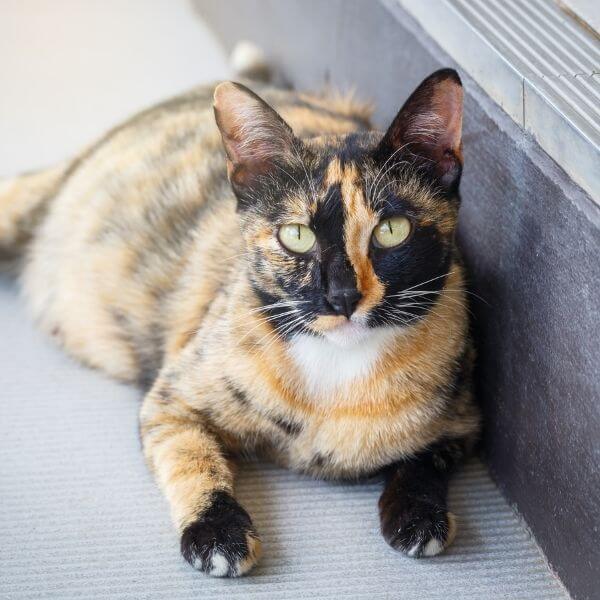Cat temps due date is a critical topic for cat owners, especially those who are expecting kittens. Knowing when your feline friend is due and understanding the signs of pregnancy can ensure the health and well-being of both the mother and her kittens. If you're wondering about cat temps due date, you've come to the right place. This article will provide a detailed explanation of everything you need to know.
Cats are known for their mysterious and independent nature, but when it comes to reproduction, there's a lot to learn. Whether you're a first-time cat owner or an experienced breeder, understanding the gestation period of cats is essential. This article will cover everything from the basics of cat pregnancy to advanced tips for caring for your pregnant cat.
By the end of this guide, you'll have a thorough understanding of cat temps due date and how to prepare for the arrival of kittens. Let's dive in!
Read also:Zoie Laurel May Herpin Unveiling The Life And Achievements Of A Rising Star
Table of Contents:
- Cat Gestation Period: Understanding the Basics
- Signs Your Cat is Pregnant
- How to Calculate Cat Temps Due Date
- Caring for a Pregnant Cat
- Nutritional Needs During Pregnancy
- Veterinary Care for Pregnant Cats
- Preparing for the Birthing Process
- Aftercare for Mother and Kittens
- Common Issues During Pregnancy
- Practical Tips for Cat Owners
Cat Gestation Period: Understanding the Basics
The average cat gestation period lasts around 63 to 67 days. This timeframe can vary slightly depending on the breed and individual cat. Understanding the basics of the gestation period is crucial for predicting the due date and ensuring proper care for the pregnant cat.
Key Points:
- Most cats give birth between 63 and 67 days after conception.
- The gestation period can vary by a few days, so it's essential to monitor your cat closely.
- Regular vet check-ups can help confirm the due date and ensure the health of the mother and kittens.
Factors Affecting Gestation
Several factors can influence the length of a cat's gestation period. These include:
- Age and overall health of the cat
- Breed-specific traits
- Environmental conditions
For example, certain breeds may have slightly shorter or longer gestation periods compared to others. Always consult with a veterinarian for accurate information specific to your cat.
Signs Your Cat is Pregnant
Identifying the signs of pregnancy in cats is essential for determining the cat temps due date. Here are some common indicators:
Read also:Mamitha Baiju Unveiling The Rising Star In The Entertainment Industry
Early Signs:
- Increased appetite
- Swollen and pink nipples (also known as "pinking up")
- Behavioral changes, such as increased affection or irritability
Late Signs:
- Visible abdominal enlargement
- Nesting behavior
- Decreased activity levels
If you suspect your cat is pregnant, a veterinarian can confirm it through ultrasound or palpation.
How to Calculate Cat Temps Due Date
Calculating the due date for a pregnant cat involves understanding the timing of conception. Since cats are induced ovulators, they only release eggs after mating. This makes it easier to estimate the due date if you know when mating occurred.
Steps to Estimate the Due Date
Step 1: Determine the date of mating. This is the most reliable way to estimate the due date.
Step 2: Add 63 to 67 days to the mating date. This will give you an approximate due date range.
Step 3: Monitor your cat for signs of impending labor, such as nesting behavior and restlessness.
Remember, every cat is unique, so the due date may vary slightly. Regular vet check-ups can help refine the estimate.
Caring for a Pregnant Cat
Proper care during pregnancy is vital for the health of the mother and her kittens. Here are some essential tips:
- Provide a quiet and comfortable space for your cat to rest.
- Ensure access to fresh water and nutritious food at all times.
- Avoid exposing your cat to stressors or potential hazards.
Creating a safe and nurturing environment will help your pregnant cat feel more comfortable as the due date approaches.
Creating a Nesting Area
A nesting area is a designated space where your cat can prepare for giving birth. It should be:
- Quiet and secluded
- Comfortable and warm
- Equipped with soft bedding and easy access
This area will become essential as your cat enters the final stages of pregnancy.
Nutritional Needs During Pregnancy
A pregnant cat's nutritional needs increase significantly during gestation. High-quality food rich in protein and essential nutrients is crucial for supporting the mother and developing kittens.
Recommended Foods:
- High-protein kitten food
- Veterinarian-recommended supplements
- Fresh water at all times
Avoid feeding your cat raw or undercooked food, as it can pose health risks. Always consult with a veterinarian for personalized dietary advice.
Veterinary Care for Pregnant Cats
Regular veterinary care is essential for ensuring the health of a pregnant cat. A vet can:
- Confirm pregnancy through ultrasound or palpation
- Monitor the development of kittens
- Provide guidance on nutrition and care
Scheduling regular check-ups will help identify any potential issues early on and ensure a smooth pregnancy.
When to Contact a Veterinarian
Contact your vet immediately if you notice any of the following:
- Excessive lethargy or weakness
- Loss of appetite
- Signs of illness or infection
Early intervention can prevent complications and ensure the well-being of your cat and her kittens.
Preparing for the Birthing Process
The birthing process, also known as queening, is a critical stage in a cat's pregnancy. Here's what you need to know:
- Ensure the nesting area is ready and comfortable.
- Monitor your cat for signs of labor, such as restlessness or panting.
- Stay calm and supportive during the birthing process.
Most cats can give birth without assistance, but it's essential to be prepared in case complications arise.
What to Do During Labor
Do:
- Provide a quiet and supportive environment.
- Monitor the birthing process closely.
- Contact a vet if labor exceeds 4-6 hours or if there are signs of distress.
Don't:
- Interfere unless absolutely necessary.
- Attempt to assist with delivery unless instructed by a professional.
Aftercare for Mother and Kittens
After the kittens are born, proper aftercare is crucial for the health of the mother and her offspring. Here's how you can help:
- Ensure the mother has access to fresh water and nutritious food.
- Monitor the kittens for signs of healthy development.
- Provide a warm and safe environment for the family.
Regular vet visits for the kittens and the mother are essential for tracking their progress and addressing any concerns.
Common Health Concerns
Be on the lookout for common postpartum issues, such as:
- Mastitis (infection of the mammary glands)
- Retained placenta
- Weak or unresponsive kittens
Seek veterinary care immediately if you notice any of these issues.
Common Issues During Pregnancy
While most pregnancies proceed smoothly, some complications can arise. Here are some common issues to be aware of:
- Miscarriage
- Infections
- Nutritional deficiencies
Regular vet check-ups and proper care can help minimize the risk of these complications.
Preventing Complications
Tips for Prevention:
- Maintain a clean and hygienic environment.
- Provide a balanced and nutritious diet.
- Limit exposure to stressors and potential hazards.
By taking proactive steps, you can help ensure a healthy pregnancy for your cat.
Practical Tips for Cat Owners
Here are some final tips for cat owners expecting kittens:
- Stay informed about cat reproduction and care.
- Build a strong relationship with a trusted veterinarian.
- Prepare emotionally and logistically for the arrival of kittens.
With the right knowledge and preparation, you can make the pregnancy and birthing process as smooth as possible for your feline friend.
Conclusion
In conclusion, understanding cat temps due date is essential for ensuring the health and well-being of both the mother and her kittens. From recognizing the signs of pregnancy to providing proper care and nutrition, every step plays a crucial role in the process.
We encourage you to share this article with fellow cat lovers and leave your thoughts or questions in the comments below. For more informative content, explore our other articles on cat care and reproduction.
Remember, your cat depends on you for love, care, and support. Together, we can create a brighter future for our feline companions!

